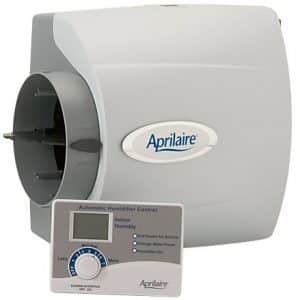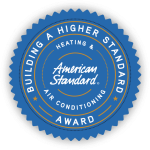Humidifier FAQ
How do you add a humidifier to a furnace?
Humidifiers are attached to the system’s ductwork, usually close to the furnace by the supply air or return air Plenum. Mount the humidifier on the ductwork near a waterline. A qualified technician supplies power and water to the humidifier. In most cases, power is used from the furnace as long as it’s 24 V power.
Are whole house humidifiers worth the money?
Whole house humidifiers are worth the money because they add comfort by adding humidity to dry air. In Kansas and Missouri, the air is dry in the winter. The humidifier is worth the money for health reasons. Of course, everyone is different regarding how they are affected by dry air. Some homeowners have to have a humidifier, and others do not want a humidifier. A whole-house humidifier is worth it because it protects wood furniture and collectibles. Of course, like any add-on, a whole-house humidifier is always a preference and not a mandatory piece of equipment.
Is a furnace humidifier the same as a humidifier?
Yes. The humidifier is a piece of additional equipment added to a furnace or air handler. It does not come with a furnace. 50% of Westerhouse Heating and Cooling customers choose to install a humidifier along with their furnace. And that number is growing as Westerhouse answers more and more questions about humidifiers and the benefits of adding a humidifier to a furnace. These numbers apply to both existing furnaces and customers installing new equipment.
What is the purpose of a humidifier?
The purpose of a humidifier is to add humidity to the air. When the relative humidity inside and outside the house is relatively low in the winter, like in Kansas and Missouri, a humidifier replaces or adds to the moisture in the air creating a more comfortable environment. When replacing your HVAC equipment, be sure to choose the correct size. The equipment’s size helps to take out the humidity automatically. That’s what an air conditioner does.
Where should a humidifier be installed on a furnace?
The humidifier is installed at the main supply or return duct plenum. The Plenum is the central duct that comes off the furnace or the main duct that goes into the furnace. Install the humidifier close to the furnace or air handler. Doing so allows you to control the humidity in the entire house. The water heater is located next to the furnace, where the water supply line is used.
Do you use a humidifier with a heat pump?
Technically a humidifier is the same. And yes, you can add a humidifier to a heat pump system. Typically, a gas furnace system tends to dry the air in the house more than a heat pump system. However, a humidifier can be installed on a heat pump system the same way it is installed on gas systems.
Does a humidifier impact the ambient temperature in the house?
Adding a humidifier will not change the set temperature, but it will change the comfort level of that temperature. An example is the difference between how cold feels in Colorado and Kansas. The temperature may be the same, but humidity levels in the air in Kansas will feel colder. Most customers express that it feels more comfortable in the winter when there is more humidity in the air. Adding humidity feels warmer and more comfortable. You can also use the example of Arizona and Kansas. Kansas at 100 degrees feels hotter than Arizona at 100 degrees due to the increased humidity level.
Many people express that it always feels warmer with the furnace on and humidity added. With a humidifier, the heat in the house feels warmer and without humidity, it feels colder.
How well does a furnace humidifier work?
They work very well. In the winter, the humidifier is set to 30 to 35% to bring the humidity level inside a home to 35% in Kansas. In our experience, we can’t think of a single time we have not been able to maintain a 35% humidity level with a humidifier. They work very well.
What kind of humidifiers are there?
A bypass humidifier is the preferred equipment choice. There are different types:
- Fan powered
- Bypass
- Steam
The bypass humidifier has the least number of moving parts and is the most affordable of all three. The fan-powered humidifier works by moving air across a water panel. A bypass humidifier uses the furnace to move air across the water panel. A steam humidifier is an entirely separate piece of equipment that you can mount anywhere and uses a hose attached to the ductwork to put steam into the unit. When hard water is an issue, a steam humidifier may cause problems. They are also costly. In evaluating all three types of humidifiers, the bypass humidifier has the most minor future issues for customers. To maintain a bypass humidifier, change the water panel once a year, preferably before the start of the winter season.
The air conditioner is a dehumidifier.
The temperature range and humidity levels in Kansas and Missouri fluctuate. In the summer, we’re trying to take humidity out of the air in the house, and in the winter, we’re trying to put humidity back into the air. A properly sized air conditioner will act as a natural humidifier, resulting in humidity levels hovering around 50%. Homes with a variable speed or 2-stage air conditioner will reach humidity levels of 40%. A variable-speed air conditioner removes more humidity as it doesn’t have to run as hard as a single-stage unit. A variable speed unit will run at 50% and run longer, pulling more humidity out of the air. An Air conditioner can only pull humidity out of the house when running. An oversized air conditioner only runs for a few minutes and won’t take the moisture out of the air.

